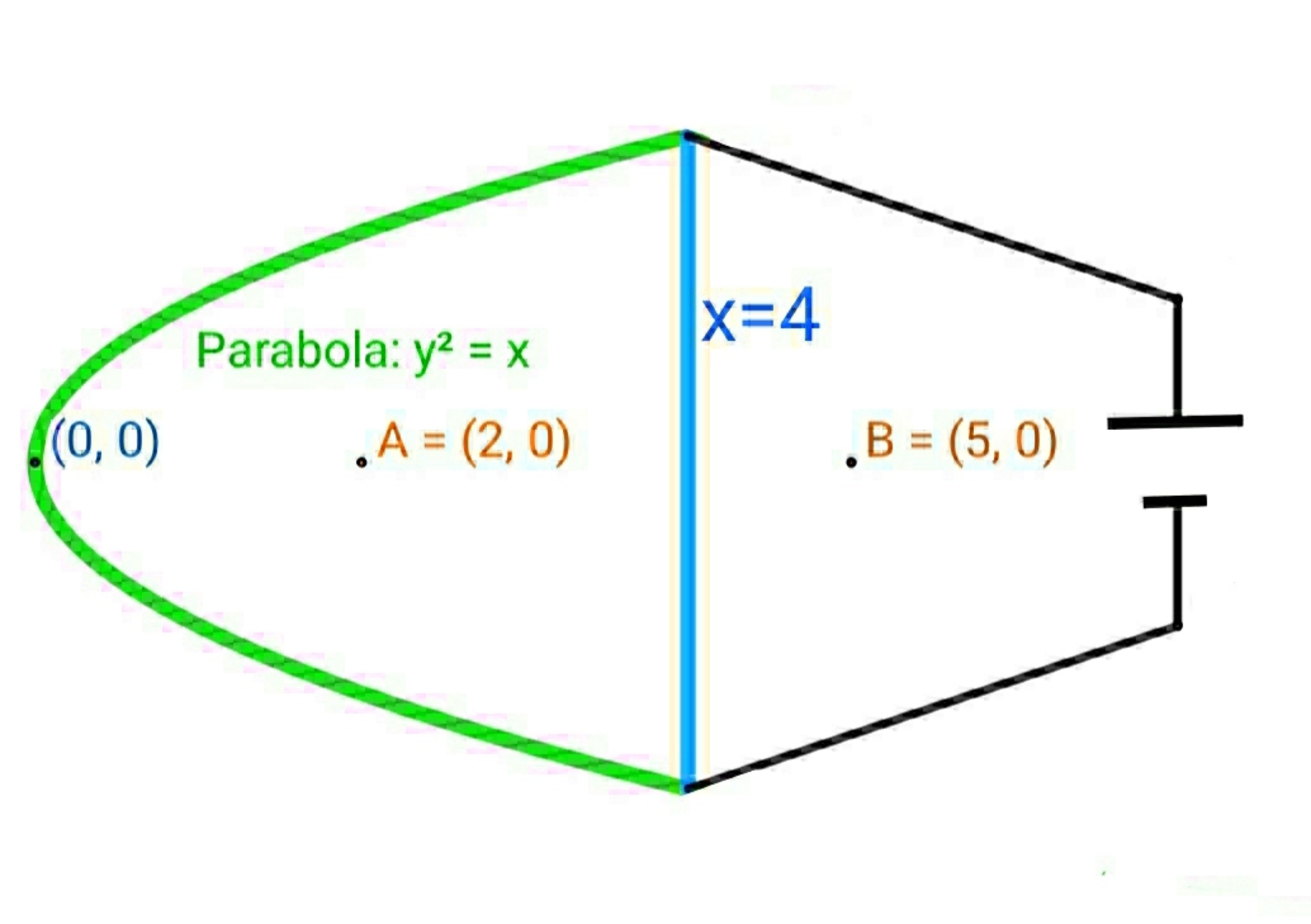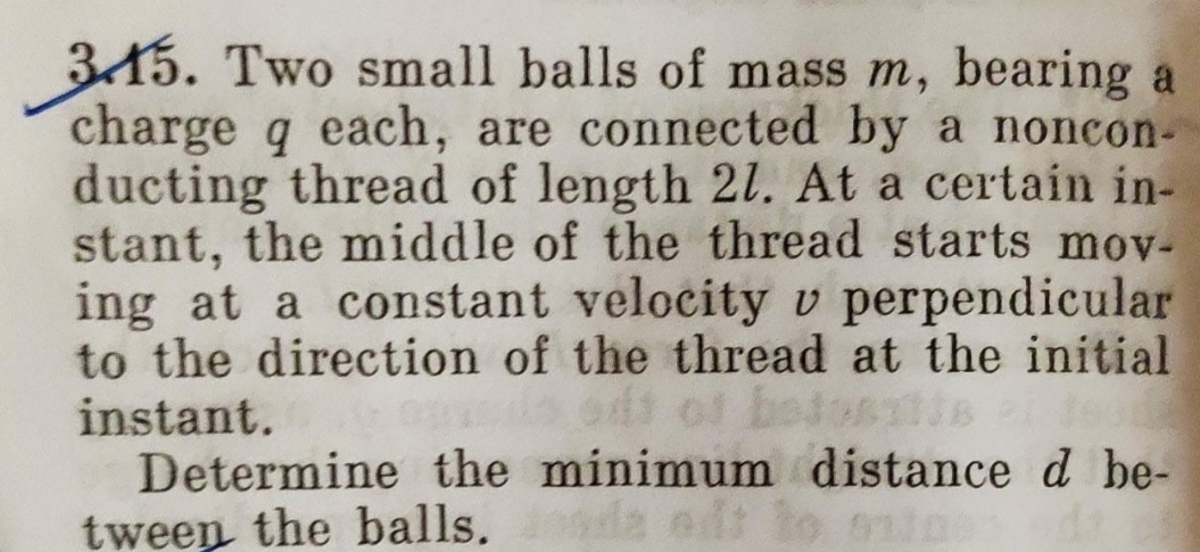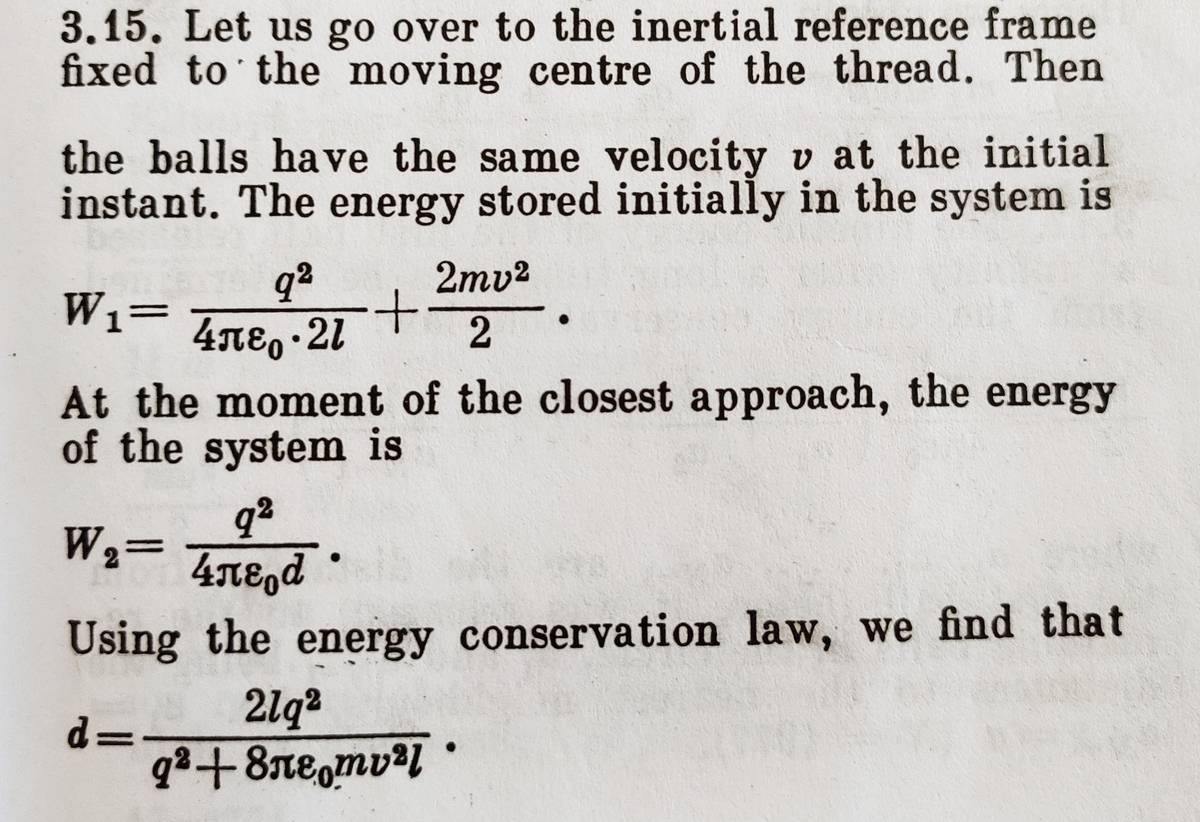Magnetism Exercise
A parabolic green wire has a resistance of
ρ
1
per unit length. A blue straight
(
x
=
4
)
a resistance of
ρ
2
per unit length. Both the wires are in
x
y
plane . Their ends are connected toa battery of V volts.

If the magnetic field at
A
is
B
A
and at
B
is
B
B
Type your answer as
B
A
B
B
Details and Assumption
1)
Neglect the contribution of magnetic field through black wire.
2)
Black wire have
0
resistance and the battery used in the circuit have
0
internal resistance.
3)
ρ
1
=
2
,
ρ
2
=
1
,
v
=
1
0
4)
Consider everything in SI units.
The problem is original.
The answer is -27.678.
This section requires Javascript.
You are seeing this because something didn't load right. We suggest you, (a) try
refreshing the page, (b) enabling javascript if it is disabled on your browser and,
finally, (c)
loading the
non-javascript version of this page
. We're sorry about the hassle.
2 solutions
Code-based solution only provided. I chose this route as I did not want to manipulate expressions.
1 2 3 4 5 6 7 8 9 10 11 12 13 14 15 16 17 18 19 20 21 22 23 24 25 26 27 28 29 30 31 32 33 34 35 36 37 38 39 40 41 42 43 44 45 46 47 48 49 50 51 52 53 54 55 56 57 58 59 60 61 62 63 64 65 66 67 68 69 70 71 72 73 74 75 76 77 78 79 80 81 82 83 84 |
|
@Karan Chatrath
please help me in this problem, I will share my opinion if you say yes.

Thanks in advance
Log in to reply
Sure, I'll try. What is your attempt?
Log in to reply
@Karan Chatrath
sir i am not able to start this problem due to this reasons
1)
conservation of momentum se aage kuch dikh nhi rha hai.
2)
Jab vo instant aayega, minimum approach wala, to dono ka x direction me velocity zero hoga par y direction ka mujhe nii pata.
3)
kya tab y direction me bhi velocity 0 hona chahiye??????
4)
Jab maine enregy conserve karne ki sochi to initial energy system ki hogi
E
i
n
i
t
i
a
l
=
2
l
K
q
2
5)
Uske baad finally jab vo moment aayega tab velocity kya hogi , agar y direction me hui to kuch galat ho jaayega.
I have shared my all views .
Hope you understand my feelings.
Log in to reply
@A Former Brilliant Member – Okay so I took: ϵ o = m = q = 1 , L = 2 , v = 0 . 1 and I solved the equations of motion and the minimum separation I get is 2.6619. I don't think I am correct, but could you substitute these values and check whether my calculation agrees with the answer in the book? Thanks in advance.
Log in to reply
@Karan Chatrath
–
@Karan Chatrath
No ,sir your are correct . Please share your explanatory solution.
Thanks in advance.
Log in to reply
@A Former Brilliant Member – It will take me quite a bit of time to type, but I suggest that you try deriving the equations of motion. No need to solve. If you can't do that, then I will type it out later. Maybe even post a problem similar to this.
-
At any point of time t , the midpoint of the string is moving along Y with a constant velocity v . The motion of each mass will be symmetrical about the Y axis. Let the coordinate of the mass on the right be ( x , y ) . Use the fact that the length of the string remains constant to derive a constraint equation. DOuble differentiate that and you will get your first equation.
-
The forces that cause the masses to move are electrostatic and tension on the string. Apply Newton's law along the X and Y direction to get your second and third equations.
Use these three equations to solve for acceleration along x acceleration along y and tension. The final equations will be very complex differential equations. I solved it numerically beyond that point.
If I can think of a better way of solving it, I will let you know.
Log in to reply
@Karan Chatrath – @Karan Chatrath what is order of that differential equation?
Log in to reply
@A Former Brilliant Member
–
@Karan Chatrath
This is the book solution, which is very small and it seems me incorrect also. In your opinion it is correct or not??

Log in to reply
@A Former Brilliant Member – No, this does not make sense to me.
@A Former Brilliant Member – Second-order and nonlinear and coupled, so I do not know how to solve that analytically. The acceleration along x looks like this:
x ¨ = − 4 x 2 ( t 2 − 2 0 t y + 1 0 0 x 2 + 1 0 0 y 2 ) 4 0 0 x ˙ 2 x 3 + 4 0 0 y ˙ 2 x 3 − 8 0 y ˙ x 3 − K t 2 + 2 0 K t y + 4 x 3 − 1 0 0 K y 2
Log in to reply
@Karan Chatrath – @Karan Chatrath Sir in discussion of electricity and magnetism , @Steven Chase sir has recently uploaded the solution of this problem, and according to his opinion, the solution of the book is correct. Can you please discuss with him, if you both share each other views in that discussion note I will be happy.
Simulation code attached. At point A, the fields largely cancel, and at point B, the fields reinforce each other. So the magnitude at B is much larger than at A.